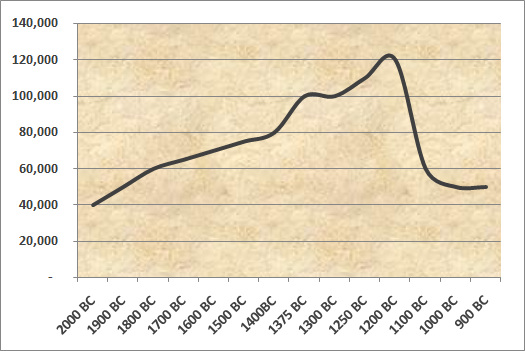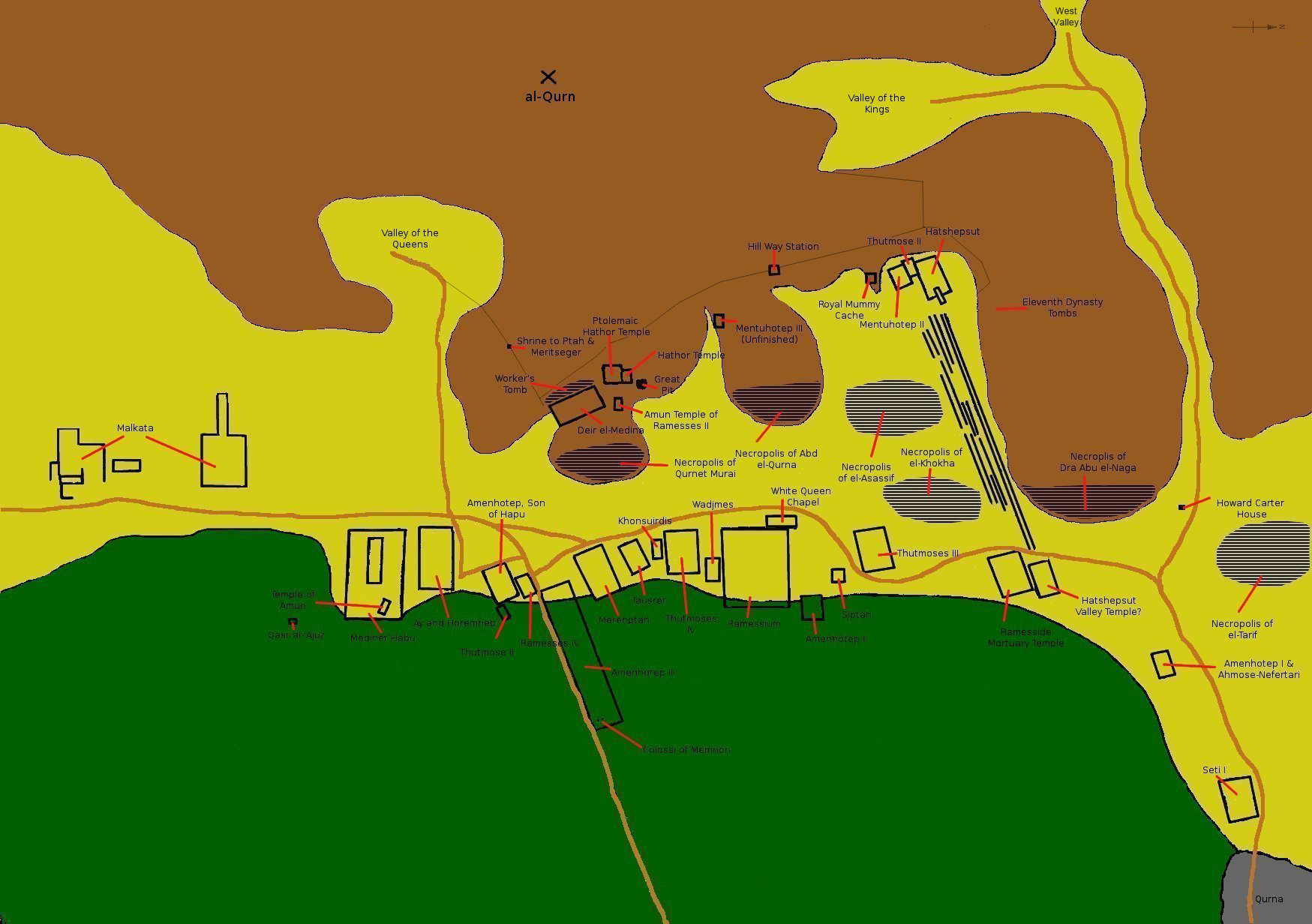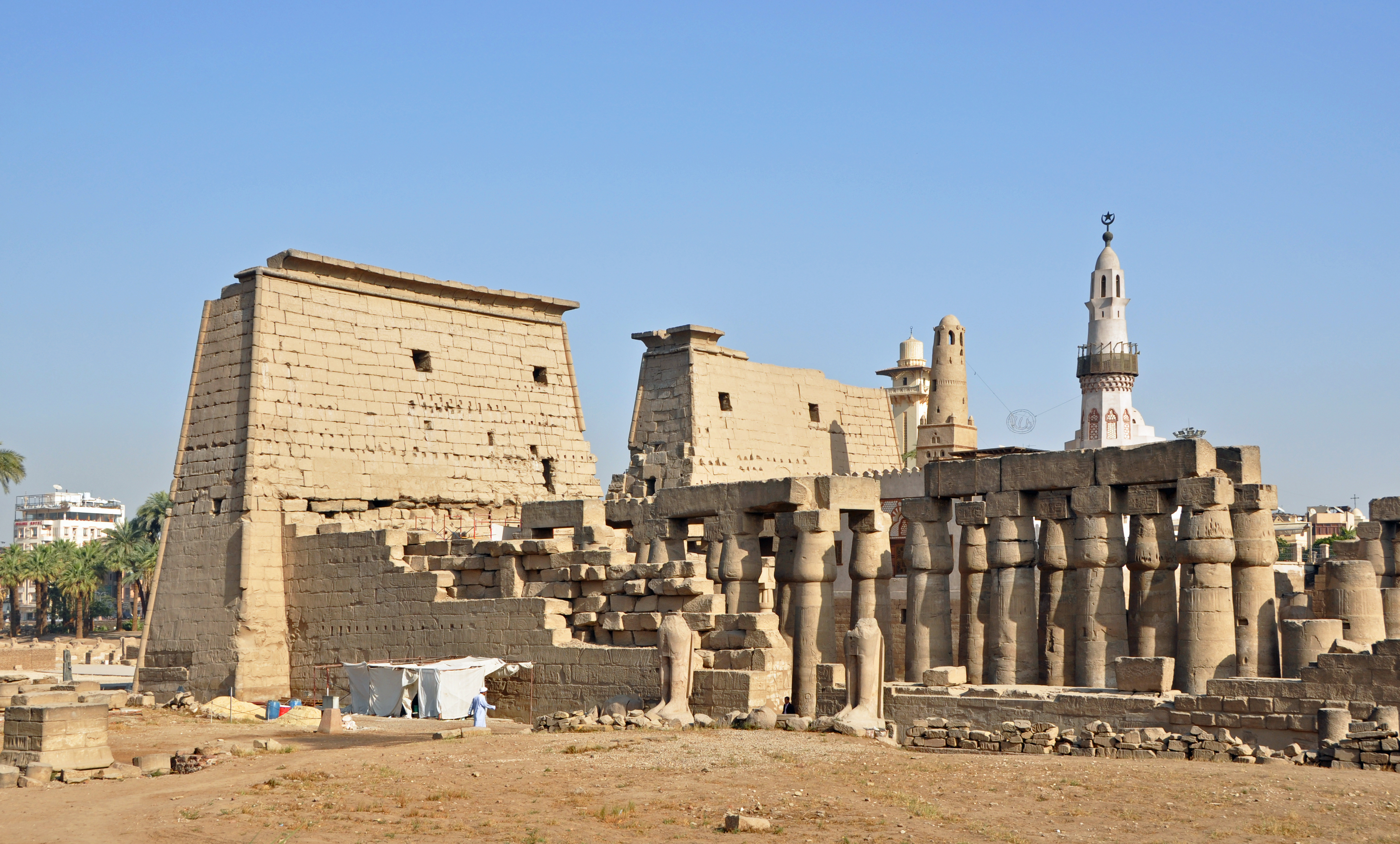|
TT21
The Thebes, Egypt, Theban Tomb TT21 is located in Sheikh Abd el-Qurna, part of the Theban Necropolis, on the west bank of the Nile, opposite to Luxor. It is the burial place of the ancient Egyptian User,Porter and Moss, Topographical Bibliography: The Theban Necropolis, pg 35-37 who was a Scribe#Ancient Egypt, scribe and steward of king Tuthmosis I during the early Eighteenth Dynasty of Egypt, Eighteenth Dynasty. User's wife was named Bakt. See also * List of Theban tombs References Theban tombs {{AncientEgypt-stub ... [...More Info...] [...Related Items...] OR: [Wikipedia] [Google] [Baidu] |
List Of Theban Tombs
The Theban Necropolis is located on the west bank of the Nile, opposite Luxor, in Egypt. As well as the more famous royal tombs located in the Valley of the Kings and the Valley of the Queens, there are numerous other tombs, more commonly referred to as Tombs of the Nobles (Luxor), the burial places of some of the powerful courtiers and persons of the ancient city. There are at least 415 cataloged tombs, designated TT for Theban Tomb. There are other tombs whose position has been lost, or for some other reason do not conform to this classification. See for instance the List of MMA Tombs. Theban tombs tended to have clay funerary cones placed over the entrance of the tomb chapels. During the New Kingdom they were inscribed with the title and name of the tomb owner, sometimes with short prayers. Of the 400 recorded sets of cones, only about 80 come from cataloged tombs. The numbering system was first published Arthur Weigall's 1908 ''Report on the Tombs of Shêkh Abd’ el Gûr ... [...More Info...] [...Related Items...] OR: [Wikipedia] [Google] [Baidu] |
Sheikh Abd El-Qurna
The necropolis of Sheikh Abd el-Qurna ( ar, شيخ عبدالقرنة) is located on the West Bank at Thebes in Upper Egypt. It is part of the archaeological area of Deir el-Bahari, and named after the domed tomb of the local saint. This is the most frequently visited cemetery on the Theban west bank, with the largest concentration of private tombs. Tombs * TT21 User, Scribe, Steward of king Thutmose I * TT22 Wah, later usurped by Meryamun * TT23 – Tjay * TT30 Khonsmose, Amun treasury official, Ramesside * TT31 – Khonsu * TT38 Djeserkaraseneb, Scribe, Counter of grain in the granary of the divine offerings of Amun * TT41 Amenemopet called Ipy, Amun temple high steward * TT42 Amenmose, Captain of troops, Eyes of the King in the Two Lands of the Retenu * TT43 Neferrenpet, Overseer of the kitchen (stores?) of Pharaoh * TT44 Amenemhab, wab-priest in front of Amun * TT45 Djehuty, Steward of high priest of Amun Mery * TT46 Ramose, Steward of the Mansion of the Ate ... [...More Info...] [...Related Items...] OR: [Wikipedia] [Google] [Baidu] |
Thebes, Egypt
, image = Decorated pillars of the temple at Karnac, Thebes, Egypt. Co Wellcome V0049316.jpg , alt = , caption = Pillars of the Great Hypostyle Hall, in '' The Holy Land, Syria, Idumea, Arabia, Egypt, and Nubia'' , map_type = Egypt , map_alt = , map_size = , relief = yes , coordinates = , location = Luxor, Luxor Governorate, Egypt , region = Upper Egypt , type = Settlement , part_of = , length = , width = , area = , height = , builder = , material = , built = , abandoned = , epochs = , cultures = , dependency_of = , occupants = , event = , excavations = , archaeologists = , condition = , ownership = , management = , public_access = , website = , notes = , designation1 = WHS , designation1_offname = Ancient ... [...More Info...] [...Related Items...] OR: [Wikipedia] [Google] [Baidu] |
Theban Necropolis
The Theban Necropolis is a necropolis on the west bank of the Nile, opposite Thebes ( Luxor) in Upper Egypt. It was used for ritual burials for much of the Pharaonic period, especially during the New Kingdom. Mortuary temples * Deir el-Bahri ** Mortuary temple of Hatshepsut ** Mortuary temple of Mentuhotep II ** Mortuary temple of Thutmose III * Medinet Habu ** Mortuary temple and palace of Ramesses III ** Mortuary Temple of Ay & Horemheb * Mortuary Temple of Amenhotep III ** Colossi of Memnon * Mortuary Temple of Merneptah * Mortuary Temple of Ramesses IV * Mortuary Temple of Thutmose IV * Mortuary Temple of Thutmose III * Mortuary Temple of Twosret * Temple of Nebwenenef * Qurna ** Mortuary Temple of Seti I * Mortuary Temple of Amenhotep II * Ramesseum (Mortuary Temple of Ramesses II) Royal Necropolis * Valley of the Kings (Modern: "''Wadi el-Muluk''") * Valley of the Queens (Modern: "''Biban el-Harim''") * Royal Cache * Bab el-Gasus Necropolis * Deir el-Med ... [...More Info...] [...Related Items...] OR: [Wikipedia] [Google] [Baidu] |
Nile
The Nile, , Bohairic , lg, Kiira , Nobiin language, Nobiin: Áman Dawū is a major north-flowing river in northeastern Africa. It flows into the Mediterranean Sea. The Nile is the longest river in Africa and has historically been considered the List of rivers by length, longest river in the world, though this has been contested by research suggesting that the Amazon River is slightly longer.Amazon Longer Than Nile River, Scientists Say Of the world's major rivers, the Nile is one of the smallest, as measured by annual flow in cubic metres of water. About long, its drainage basin covers eleven countries: the Democratic Republic of the Congo, Tanzania, Burundi, Rwanda, Uganda, Kenya, Ethiopia, Erit ... [...More Info...] [...Related Items...] OR: [Wikipedia] [Google] [Baidu] |
Luxor
Luxor ( ar, الأقصر, al-ʾuqṣur, lit=the palaces) is a modern city in Upper (southern) Egypt which includes the site of the Ancient Egyptian city of ''Thebes''. Luxor has frequently been characterized as the "world's greatest open-air museum", as the ruins of the Egyptian temple complexes at Karnak and Luxor stand within the modern city. Immediately opposite, across the River Nile, lie the monuments, temples and tombs of the west bank Theban Necropolis, which includes the Valley of the Kings and Valley of the Queens. Thousands of tourists from all around the world arrive annually to visit Luxor's monuments, contributing greatly to the economy of the modern city. The population of Luxor is 422,407 (2021), with an area of approximately . It is the capital of Luxor Governorate. It is among the oldest inhabited cities in the world. Etymology The name ''Luxor'' ( ar, الأقصر, al-ʾuqṣur, lit=the palace, pronounced , , Upper Egyptian: ) derives from the Ara ... [...More Info...] [...Related Items...] OR: [Wikipedia] [Google] [Baidu] |
Scribe
A scribe is a person who serves as a professional copyist, especially one who made copies of manuscripts before the invention of automatic printing. The profession of the scribe, previously widespread across cultures, lost most of its prominence and status with the advent of the printing press. The work of scribes can involve copying manuscripts and other texts as well as secretarial and administrative duties such as the taking of dictation and keeping of business, judicial, and historical records for kings, nobles, temples, and cities. The profession has developed into public servants, journalists, accountants, bookkeepers, typists, and lawyers. In societies with low literacy rates, street-corner letter-writers (and readers) may still be found providing scribe service. Ancient Egypt One of the most important professionals in ancient Egypt was a person educated in the arts of writing (both hieroglyphics and hieratic scripts, as well as the demotic script from the s ... [...More Info...] [...Related Items...] OR: [Wikipedia] [Google] [Baidu] |
Tuthmosis I
Thutmose I (sometimes read as Thutmosis or Tuthmosis I, Thothmes in older history works in Latinized Greek; Ancient Egyptian: '' ḏḥwtj- ms'', ''Tʼaḥawtī-mīsaw'', , meaning "Thoth is born") was the third pharaoh of the 18th Dynasty of Egypt. He received the throne after the death of the previous king, Amenhotep I. During his reign, he campaigned deep into the Levant and Nubia, pushing the borders of Egypt farther than ever before in each region. He also built many temples in Egypt, and a tomb for himself in the Valley of the Kings; he is the first king confirmed to have done this (though Amenhotep I may have preceded him). Thutmose I's reign is generally dated to 1506–1493 BC, but a minority of scholars—who think that astrological observations used to calculate the timeline of ancient Egyptian records, and thus the reign of Thutmose I, were taken from the city of Memphis rather than from Thebes—would date his reign to 1526–1513 BC. He was succeeded by his son ... [...More Info...] [...Related Items...] OR: [Wikipedia] [Google] [Baidu] |
.jpg)




